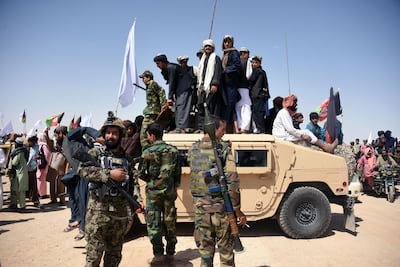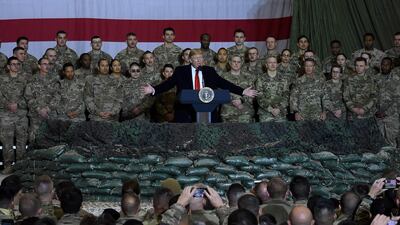As the US and Taliban are poised to sign a breakthrough peace agreement, which will see US troops withdraw, after more than 18 years, from their longest-ever war, here’s everything you need to know:
What are the key terms of the agreement?
The final peace deal hinges on the success of a short-term agreement for a seven-day reduction in violence. The trial period is expected to begin within one week. The terms stipulate that it must be a nationwide reduction in violence against both Americans and Afghans, calling for a suspension of roadside bombs, suicide attacks, and rockets among other forms of violence.
Of note, the agreement calls for a reduction of violence, not a total cessation of violence. Operating within the understanding that some violence in the country is not Taliban-directed, Washington and the Taliban have created a line of communication that will serve as a dispute mechanism, in case any violence does occur during the seven days.
The long-term peace agreement depends entirely upon these seven days. If the reduction in violence is successful, negotiations will proceed between American and Taliban negotiators with the aim of signing a new deal which includes three key points:
- The Taliban will agree not to recruit, fundraise or train international terrorists in areas they control
- The Taliban and Afghan government must begin intra-Afghan discussions with each other regarding a sustainable governance structure
- A permanent and comprehensive ceasefire is the ultimate goal of those discussions
In exchange for these terms, the Americans will agree to withdraw, in phases, all their troops from Afghanistan. An estimated 12,000 troops remain in the country.
Who are the key players?
US envoy Zalmay Khalilzad is the chief negotiator on the American side, colloquially referred to as “Zal,” this is his second attempt to help US President Donald Trump finalise a peace deal with the Taliban. The Afghan-born diplomat, who serves as the main intermediary between the two groups, nearly finalised a peace agreement last year, before Trump abruptly cancelled the deal.
Details about the Taliban’s negotiators are expectedly more opaque, but the two officials that have served as public spokesmen for the group during these negotiations are Zabihullah Mujahed and the deputy head of the group’s political office Abdul Salam Hanafi.
Afghan President Ashraf Ghani is playing an indirect role since he was not invited to the negotiation table, despite his demands to be more involved. This partly stems from the Taliban’s refusal to recognise the legitimacy of the Afghan government. Mr Ghani has stayed abreast of all the negotiations, but ultimately, he will be expected to acquiesce to the American side’s terms. At the Munich Security Conference in February, Mr Ghani met with US Secretary of State Mike Pompeo and Secretary of Defence Mark Esper to discuss the terms of the agreement.
US President Donald Trump is serving as the “closer” in the negotiations, as he did in 2019. While the heavy lifting of the negotiations is being led by Mr Khalilzad, the diplomat is working on behalf of the White House, the Pentagon and the US intelligence community, who must all agree to the final terms of the deal.
What could go wrong?
Critics of the deal are sceptical it will lead to immediate peace in Afghanistan. Rather, it opens the door to discussions of peace by ending the stand-off between the Taliban and the Afghan government.
With immediate peace unlikely given the tense situation that will remain once US forces leave, critics say the deal serves as more of a US withdrawal agreement than an actual peace agreement.
If the withdrawal is accomplished, the American negotiators would have fulfilled a Trump campaign promise to withdraw US troops from Afghanistan, well-timed before the presidential election in November.
Nato members are watching the negotiations closely and considering withdrawing their own forces from Afghanistan as the US looks to minimise its presence in the country.
When was the last negotiation?

An earlier bout of negotiations between the Taliban and US was expected to be finalised in September 2019, but the negotiations ended when Trump abruptly pulled out of the deal. Mr Trump cited the death of an American soldier in Kabul as his reasoning for cancelling the deal. But, during that negotiation period, other American soldiers were also killed in attacks in Afghanistan and the discussions still forged ahead despite their deaths.
In a tweet, Mr Trump said he had invited the Taliban to a “secret” meeting at Camp David, unfavourably scheduled for the weekend before the anniversary of the September 11 attacks.
This decision to bring Taliban officials to the US splintered Mr Trump's advisers, with his National Security Adviser John Bolton strongly opposing the meeting. Bolton was fired just days after the scheduled Camp David visit.
Where are the negotiations taking place?
Qatar’s capital Doha has served as the headquarters for all negotiations between the Americans and the Taliban. The negotiations have been taking place in a conference room in Doha’s Diplomatic Club and the final deal, if reached, will be signed during a ceremony in Doha, where the Taliban has a political office.
































